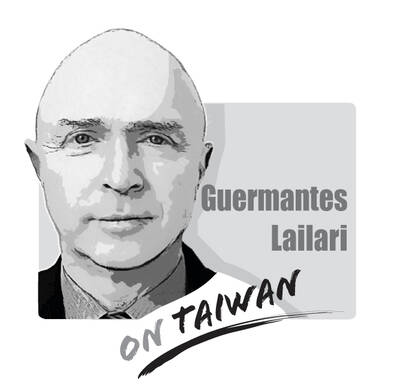The escalating global climate crisis has evolved into a challenge intertwining social equity, economic growth and international diplomacy.
Since the signing of the UN Framework Convention on Climate Change (UNFCCC) in 1992, efforts have expanded beyond policy negotiations into broader social movements. Yet, despite decades of commitments, action remains inadequate.
Scientists warn that global temperatures could breach the 1.5°C threshold within seven years, jeopardizing the Paris Agreement’s ambitions. In this high-stakes context, young people have emerged as a dynamic force, redefining climate action with innovative, grassroots approaches.
Protest is often the entry point for climate action. Greta Thunberg’s Fridays for Future grew from a lone school strike in Sweden to a global movement pressuring governments. Extinction Rebellion Youth pushed the UK government to declare a climate emergency in 2019.
In Taiwan, students have protested university investments in polluting industries, scoring wins at top institutions.
However, protests can lose momentum without clear follow-through, as seen in the US Climate Strike Alliance, which struggled due to weak organization and resources. Still, when structured effectively, they ignite deeper engagement, as young Taiwanese have demonstrated by translating campus outrage into tangible policy shifts.
Advocacy bridges raw anger and actionable change. India’s Youth for Climate secured the Air Quality Improvement Act, while the African Youth Initiative on Climate Change trained young people to integrate renewable energy into underserved communities.
Taiwan’s Green Citizens’ Action Alliance (GCAA) exemplifies this shift — beyond marches, it has shaped energy policies, including rooftop solar initiatives and amendments to the Electricity Act (電業法), laying the groundwork for the nation’s renewable transition.
Resolution is where ideas solidify into policy or legislation. The Paris Agreement, though criticized for its reliance on voluntary targets, has driven domestic policies and corporate benchmarks.
However, political shifts pose risks. The US’ Green New Deal, championed by progressives under former US president Joe Biden, stalled due to partisan gridlock and was later dismantled under US President Donald Trump. This highlights a hard truth: Even when advocacy matures into policy, it remains vulnerable. Young people must navigate this landscape with strategy, not just zeal.
Taiwan’s young people face unique challenges. Excluded from formal UNFCCC participation, they have forged alternative pathways. The Taiwan Youth Climate Coalition (TWYCC), founded in 2009, trains young leaders through mock conference of the parties (COP) simulations and amplifies Taiwan’s voice at UN climate summits.
GCAA’s policy victories have accelerated Taiwan’s renewable energy shift, while groups like Our Island use documentaries to advance marine conservation efforts. The Taiwan Environmental Information Association and Citizen of the Earth foundation further enrich the nation’s environmental landscape.
However, lean budgets and diplomatic isolation limit their reach. TWYCC, for instance, attends COP as observers, not decisionmakers. Despite these hurdles, Taiwan’s young people employ digital diplomacy and regional alliances to maintain global engagement.
Across the world and in Taiwan, climate action thrives when protest, advocacy and resolution align, transforming grassroots momentum into lasting change. Young people bring fresh ideas and determination to a crisis they would outlive. Yet, co-optation remains a risk — politicians and vested interests can exploit their efforts.
Taiwan’s geopolitical constraints intensify this challenge, yet its youth persist, blending local achievements with global dialogue. As climate stakes rise their role is not just vital — it is a model for turning urgency into impact.
Jack Huang is a Taipei-based research fellow at the UN.

There is much evidence that the Chinese Communist Party (CCP) is sending soldiers from the People’s Liberation Army (PLA) to support Russia’s invasion of Ukraine — and is learning lessons for a future war against Taiwan. Until now, the CCP has claimed that they have not sent PLA personnel to support Russian aggression. On 18 April, Ukrainian President Volodymyr Zelinskiy announced that the CCP is supplying war supplies such as gunpowder, artillery, and weapons subcomponents to Russia. When Zelinskiy announced on 9 April that the Ukrainian Army had captured two Chinese nationals fighting with Russians on the front line with details
Within Taiwan’s education system exists a long-standing and deep-rooted culture of falsification. In the past month, a large number of “ghost signatures” — signatures using the names of deceased people — appeared on recall petitions submitted by the Chinese Nationalist Party (KMT) against Democratic Progressive Party legislators Rosalia Wu (吳思瑤) and Wu Pei-yi (吳沛憶). An investigation revealed a high degree of overlap between the deceased signatories and the KMT’s membership roster. It also showed that documents had been forged. However, that culture of cheating and fabrication did not just appear out of thin air — it is linked to the
The Chinese Nationalist Party (KMT), joined by the Taiwan People’s Party (TPP), held a protest on Saturday on Ketagalan Boulevard in Taipei. They were essentially standing for the Chinese Communist Party (CCP), which is anxious about the mass recall campaign against KMT legislators. President William Lai (賴清德) said that if the opposition parties truly wanted to fight dictatorship, they should do so in Tiananmen Square — and at the very least, refrain from groveling to Chinese officials during their visits to China, alluding to meetings between KMT members and Chinese authorities. Now that China has been defined as a foreign hostile force,
On April 19, former president Chen Shui-bian (陳水扁) gave a public speech, his first in about 17 years. During the address at the Ketagalan Institute in Taipei, Chen’s words were vague and his tone was sour. He said that democracy should not be used as an echo chamber for a single politician, that people must be tolerant of other views, that the president should not act as a dictator and that the judiciary should not get involved in politics. He then went on to say that others with different opinions should not be criticized as “XX fellow travelers,” in reference to